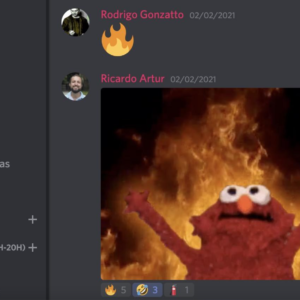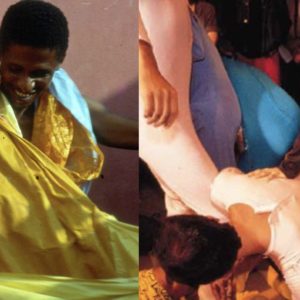From the outset of their design education at UTFPR, Alanis Louise de Mello Zukowski and Maria Vitória Ribeiro Kosake were struck by a disconnect between their aspirations and the education they received. The design curriculum seemed narrowly focused on technical skills and market demands, leaving little room for critical reflection or social engagement. As they progressed through their courses, they began to feel the weight of unspoken crises—questions about purpose, identity, and the broader impact of their work.
Their journey took a turn when they enrolled in an elective course on Design for People. This class, unlike others, embraced a critical pedagogical approach inspired by Paulo Freire. It emphasized dialogue, collective learning, and exploring personal and social issues through design. In the class of 2022, students engaged in dynamic discussions about existence, professional aspirations, and personal crises. The Crisis Deck was born out of these discussions. The students recognized that many of their peers were experiencing similar existential challenges and created a tool to help others navigate these turbulent waters.
Students interviewed a few colleagues and compiled their findings in a sympathy map. They devised their representation strategy after evaluating various card decks used in other design classes and learning about Theater of the Oppressed and Pedagogy of the Oppressed.
Similar to the Chinese ideogram for crisis, which is composed of two elements (a representational strategy they took from Theater of the Oppressed), each card would have two sides: one representing its dangerous side and the other its turning point side. Like the first cultural sheets developed in the Pedagogy of the Oppressed, their cards wouldn’t have any labels. The goal was to stimulate questioning oneself and debating with others. Hence, a certain level of ambiguity would make sense. They printed their first prototype with photographs of Lego Serious Play models. The students behind this project were Haruka Ozawa, Isabela Luiza Molin de Siqueira, Isabelle De Santis Souza, and Paulo Henrique Blosfeld Santos.

Once they had a prototype, students invited their peers to try the cards and have a debate about the existential crisis they were feeling while getting closer and closer to graduation. Here was when Alanis and Maria Vitória learned about the project and decided to take it further as their final work in their Graphic Design degree. Since the project was licensed under a Creative Commons BY-NC-SA license by its authors, Alanis and Maria Vitória could build on it.
Their first design action was to devise a proper visual language for the cards. They wanted to create a tool that transcended cultural and linguistic barriers, making it accessible and relevant to many students. They blend fantasy elements with generic human figures in their visual representations. This approach allowed them to create imaginative and grounded images in relatable human experiences without resourcing to gendered or racialized representations of the human body.

The students created initial prototypes of the cards and tested them with their peers. These tests helped to assess the clarity, impact, and engagement level of the cards. Observing the interactions and discussions prompted by the cards provided valuable insights into their effectiveness as a reflective tool.

Creating the Crisis Deck was more than an academic project; it was a journey of self-discovery and empowerment. Through their work, Alanis, Maria Vitória, and their classmates found a way to articulate and address their crises, transforming them into a source of collective strength and wisdom. They aimed to inspire their peers to critically engage with their educational and professional experiences, fostering a sense of freedom and purpose.

The Crisis Deck’s representation strategy was deeply rooted in the educational and theatrical philosophies of Paulo Freire and Augusto Boal. By integrating critical consciousness, dialogical learning, and interactive visual storytelling, the students created a powerful tool for self-reflection and collective empowerment. This approach addressed the immediate needs of design students and fostered a broader understanding of how design can be a transformative practice in education and beyond.
Download the project thesis (Portuguese)
Crisis Deck
Some rights reserved (Creative Commons BY-NC-SA). Alanis Louise de Mello Zukowski and Maria Vitória Ribeiro Kosake.
Reference
Zukowski, Alanis Louise de Mello; Kosake, Maria Vitória Ribeiro; Amstel, Frederick Marinus Constant van; “Codificação gráfica de crises existenciais: reflexões sobre um experimento de educação crítica em design”, p. 1756-1763 . In: Anais do 11º Congresso Internacional de Design da Informação e 11º Congresso Nacional de Iniciação Científica em Design | CIDI+CONGIC 2023. São Paulo: Blucher, 2024. https://doi.org/10.5151/cidiconcic2023-121_649945

